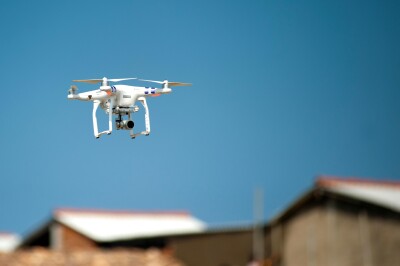As the U.S. Congress continues to debate FAA reauthorization, commercial drone operators are keenly focused on legislative language that would require the agency to develop a final rule for regulating and approving beyond visual line of sight (BVLOS) flights.
Both the U.S. House of Representatives and the Senate versions of FAA reauthorization bills direct the agency to develop a UAV BLVOS notice of proposed rulemaking (NPRM) within 4-6 months of the legislation’s passage, setting a path to adoption of a final rule within two years. Commercial drone operators say they eagerly need the rule to reform the waiver process now governing BVLOS operations, which industry players believe is much too slow and unwieldy to allow for scalable growth.
The BVLOS waiver process “is long, and so for a commercial business like us, it's hard to compete and bid [on contracts when] we're not even sure that we're going to have the legal authority to do it by the time that the operation is needed to be done,” Phoenix Air Unmanned (PAU) Managing Director William Lovett said.
PAU has had success in gaining BLOVS waivers from the FAA going as far back as 2018 to conduct, among other operations, long-range utility transmission line inspections for Xcel Energy with SwissDrone equipment. The company noted last year that it had completed 13,000 miles of BVLOS utility inspections.
But Lovett said the FAA needs to “streamline the process because they're bogged down with so many applicants and requests,” adding: “It’s got to change for this industry to be able to scale and be healthy. The regulatory process has got to change so the business can survive.”
Congress in early March temporarily extended FAA’s authorization to May 10, giving the House and Senate more time to iron out details of a final bill reauthorizing the agency for five years that must pass both chambers.
The House passed its FAA reauthorization bill by a wide, bipartisan majority in June 2023, while the Senate’s Commerce, Science and Transportation Committee cleared a bill in February to be considered by the full chamber. House and Senate members are negotiating changes to the Senate bill so that, once adopted, it could then be quickly passed by the House to be sent to President Joe Biden to be signed into law.
The points of contention between the House and Senate largely relate to the airline industry, so it appears likely the UAV BVLOS provisions will be adopted. For the commercial drone industry, it is a matter of timing. The House bill requires a BVLOS NPRM within four months of the legislation’s passage and a final rule within 16 months of passage, while the Senate bill calls for an NPRM within six months and a final rule within two years.
Working out final language on the timing is not expected to be a hold up, and the clock would start ticking once legislation is passed by the full Congress. If a bill is passed in May, for example, a final rule would then be required by May 2026 under the Senate’s timetable.
“The safety aspect is always paramount in the minds of FAA officials when they're crafting new regulations and policy, and drones were dropped in their lap” in the middle of the last decade, Vic Moss, CEO of the Drone Service Providers Alliance, said. “They weren't quite ready for it, so they didn't have anything to work with. But with the more data they get on drones, the FAA is realizing” drones can be safely operated.
Moss and Lovett have both advised the FAA on BVLOS. Moss served on the agency's Drone Advisory Committee and Lovett was a member of the Unmanned Aircraft Systems BVLOS Aviation Rulemaking Committee (ARC), which provided recommendations in 2022 that are expected to heavily influence FAA’s rulemaking process.
In the ARC’s final report, the committee stated that BVLOS operations are “what offers the most economic and societal benefits” from commercial drones, adding: “Today, companies, communities and industrial sectors are eager to realize these benefits and have invested substantial resources developing UAS technologies. The FAA’s existing regulatory framework must change to better support the long-term viability and sustainability of this evolving aviation sector.”
Lovett noted the ARC report included “recommendations to the FAA about how to streamline the [BVLOS approval] process and broaden the capability of commercial operators. I think the FAA is considering that.”
He added that safety concerns about congested airspace and flying over crowded population centers should not be used to impose blanket restrictions. “There's so much work that can be done in rural areas that do not have a lot of population,” he explained. “With pipeline inspections, utility inspections, railroads, anything that falls in that linear infrastructure, there's a tremendous amount of work that can be done. We can build an acceptable safety case to the FAA. We can operate these aircraft safely. Helicopter pilots unfortunately die every year because of proximity to power lines. I think there is a definite safety case for drones.”
The Senate bill as approved by committee instructs the FAA to include in its rule “an applicable risk assessment methodology for the authorization of BVLOS unmanned aircraft system operations that includes quantified measures of acceptability which sufficiently account for the total air and ground risks associated with such operations and the means for mitigating such risks.”
The Senate bill also calls for the FAA to establish remote pilot certification standards for BVLOS operations, “taking into account varying levels of automated control and management of unmanned aircraft system flights.” The Senate legislation additionally mandates that the FAA establish an airworthiness process for “small unmanned aircraft systems that requires a manufacturer’s declaration of compliance” to the agency, but will not require “type or production certification or the issuance of a special airworthiness certificate.”
The Senate bill envisions drones covered under the BLOVS rule having a maximum gross weight of 1,320 lbs, a maximum speed of 100 miles per hour and operating no more than 400 feet above ground level or 400 feet above a structure’s uppermost limit within a 400 foot radius of that structure.
Lovett said PAU has had success gaining FAA BVLOS waivers by demonstrating strong safety measures. “Fortunately, we made a lot of headway with showing aircraft performance and having a robust safety plan and redundancies built in place,” he explained.
But it is a challenge to determine an “acceptable level of safety” across the broad commercial drone business, Lovett noted.
“How do you apply [safety rules] with different [drone designs operated by] different pilots in different regions? That's the difficult question,” he said. “It's hard to just broad-brush it from the FAA’s perspective and I get that. But there should be some way to narrow the scope a little bit and allow some more operations to begin.”
A final BVLOS rule from the FAA is “the Holy Grail,” Moss said, noting clear rules of the road and streamlined approvals can lead “to really scaling up commercial operations. Right now, it's just too difficult to check all those boxes, cross all those T's, dot all those I’s for anybody but a team of lawyers to sit down and write a waiver application.”
















Comments